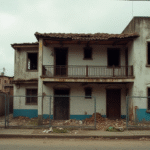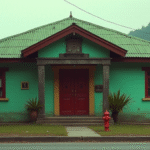Introduction
At first glance, comparing poverty to beauty may seem frivolous and superficial. However, a deeper reflection reveals the profound connection between these two concepts. Both beauty and poverty are relational designations, not absolute qualities, influenced by cultural norms, social power dynamics, and the perspectives of those who name them.
Beauty and Poverty: Contextual Designations
Beauty has been conceptualized differently across cultures and periods, shaped by cultural canons, images, stereotypes, class, and racial hierarchies. Similarly, poverty has been viewed, named, and measured through the lens of various forms of power. Neither beauty nor poverty exist independently; they are experiences and identities molded by surrounding contexts, social oppositions, cultural backgrounds, and the power of those who define them.
Multifaceted Nature of Poverty
Poverty can be understood as both an economic shortfall (less than $2.15 a day) and a multidimensional issue involving the simultaneous deprivation of rights such as health, housing, education, and nutrition. For those experiencing poverty, it is often an everyday reality of exclusion, invisible precarity, and vulnerability without support.
Who Decides How Poverty is Measured?
A global architectural framework, composed of expert committees, multilateral agencies, and research centers—mostly located in global Northern capitals—determines poverty measurements. These entities rarely include those living in poverty or representatives from the poorest countries. Their members travel in “business class,” stay in five-star hotels, and discuss poverty lines while dining in restaurants where a glass of wine costs more than the daily income of half the world’s population.
Global Poverty Measurement Industry
Measuring poverty has become a global industry with its own logic, often detached from local contexts. As Nancy Fraser noted, there is a “fallacy of redistribution without recognition”: believing that adjusting figures alone suffices, without understanding or transforming the structures perpetuating exclusion. Dominant measurements tend to depoliticize the issue, neutralizing its potential as a demand for justice.
Amartya Sen’s Capabilities Approach
Amartya Sen argued that poverty should not be understood solely as a lack of income but as the deprivation of capabilities: the ability to live a life one values. However, this rich theory is often simplified or disregarded in practical statistical work, where quantifiable factors overshadow lived experiences.
Symbolic Violence and Structural Conflicts of Interest
Pierre Bourdieu highlighted that social structures generate “symbolic violence” when they pass off certain imposed classifications as neutral or natural. The way poverty is measured creates categories, determines visibility and invisibility, and distributes recognition or neglect.
Institutional Models for Measuring Poverty
Effective institutional models clearly separate functions. In the UK, the National Statistics Office collects data, while methodological definitions are debated in mixed spaces involving academia, civil society, and independent agencies. In South Africa, Stats SA publishes microdata, but the multidimensional poverty index calculation involves dialogue with public universities and the Human Sciences Research Council. In Mexico, INEGI used to conduct surveys (ENIGH), while CONEVAL, an autonomous technical body, defined indicators, ensuring a functional division between data collection, evaluation, and reporting.
Lack of Poverty Measurement Capacity in Many Countries
Some countries cannot even measure their own poverty due to statistical capacity limitations, armed conflict, or chronic underfunding. According to the Multi-Dimensional Poverty Index (MPOI), over 30 countries lack regular self-generated data and rely on externally funded surveys or estimation models. These countries almost entirely depend on internationally produced figures, such as those from the World Bank, UNDP, or ECLAC. In places like Liberia, South Sudan, or Haiti, data comes from sporadically funded donor surveys or externally assumed typologies.
Importance of Participatory Measurement
Measuring poverty without the participation of those who experience it or live in its context is like designing a map without ever setting foot on the land. Lines are drawn without understanding local paths. What appears as objective neutrality may actually be a form of epistemic colonization.
A genuine epistemology of poverty cannot be constructed without the participation and influence of those who experience it. Without their voices, any measurement becomes a form of technical silencing.
Conclusion
Measuring poverty is part of a technology of governance, allowing for classification, observation, and action upon populations. In Mexico, the “primero los pobres” (poor first) discourse has legitimized measurement as a tool for social justice. However, even well-intentioned policies rely on power devices that shape how we understand, manage, and narrate poverty. Like any figure, poverty measurement both reflects reality and organizes it.






